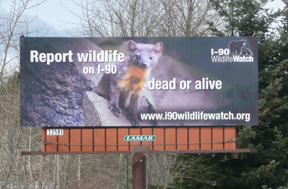It’s been a quiet summer for epizootic hemorrhagic disease (EHD) in deer. Either conditions didn’t favor the biting midges that spread the disease among deer, or the northern states that experience periodic fatal outbreaks of the disease are becoming used to the new normal.
EHD season isn’t over, though, as these two news items show. Reuters says that wildlife managers in Montana are trying to pin down the cause of death for 100 white-tailed deer along the Clark Fork River. EHD had not been previously found in Montana west of the Continental Divide, the article says.
In North Dakota, there is no doubt that EHD is the cause of deer deaths there. An Associated Press story says that North Dakota’s Game and Fish Department has suspended the sale of 1,000 doe hunting licenses because of an EHD outbreak that began in August and continues, the article quotes ND wildlife Chief Randy Kreil as saying.
Read the AP article in South Carolina’s The State, here.

 Spring is here and a bunch of wildlife surveys are underway around the country.
Spring is here and a bunch of wildlife surveys are underway around the country.
